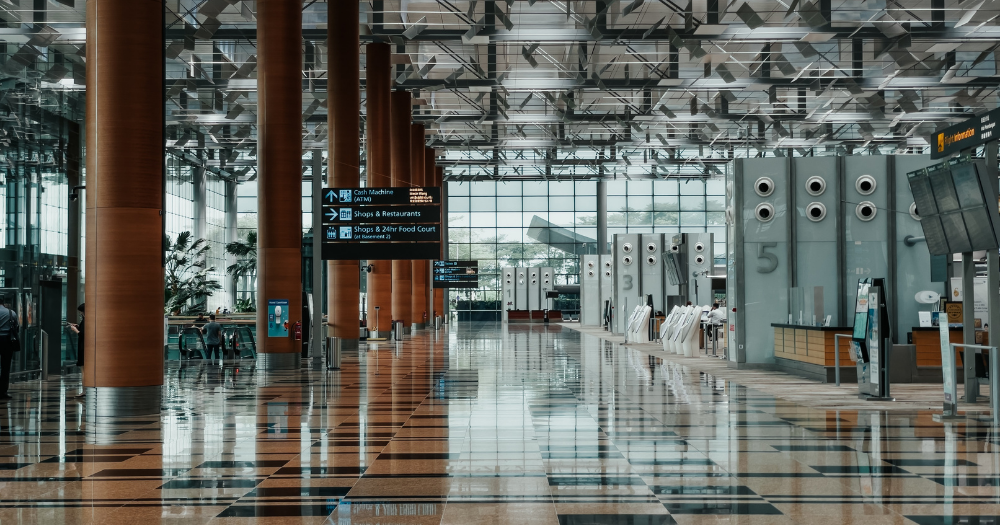Follow us on Telegram for the latest updates: https://t.me/mothershipsg
Starting from 11:59pm on Tuesday (Oct. 26), travellers (excluding short-term visitors) with a 14-day travel history to India, Bangladesh, Myanmar, Nepal, Pakistan, and Sri Lanka will be allowed to enter and transit through Singapore.
Long-term pass holders and short-term visitors have been disallowed from doing so since Apr. 23 for India, May 1 for Bangladesh, Nepal, Pakistan, and Sri Lanka, and Jul. 15 for Myanmar.
MOH has also moved 15 countries, including Malaysia and Indonesia, up to Category III based on their Covid-19 situation.
This will mean a reduction of tests and a loosening of stay-home notice restrictions for travellers from Malaysia and Indonesia.
Ong: Situation in countries has stabilised
In a press conference on Saturday (Oct. 23), the Multi-Ministry Taskforce announced that travellers with recent travel history to India, Bangladesh, Myanmar, Nepal, Pakistan, and Sri Lanka will be subject to Category IV border measures in Singapore.
"The situation in these countries has stabilised for some time, and there is no longer a need for a strict not-to-land rule," Minister for Health Ong Ye Kung stated.
Also effective 11:59pm on Oct. 26, a number of countries who were previously in Category IV have been moved up to Category III based on their Covid-19 situation.
These countries are: Cambodia, Egypt, Hungary, Indonesia, Israel, Malaysia, Mongolia, Qatar, Rwanda, Samoa, Seychelles, South Africa, Tonga, United Arab Emirates (UAE), and Vietnam.
Streamlining testing regime and SHN protocols
In addition to reviewing the categorisation of countries, the MTF has also has further reviewed and streamlined the testing protocols and procedures for travellers arriving in or transiting through Singapore.
All travellers will only undergo one PCR test
Starting from 11:59pm on Oct. 26, all travellers arriving in Singapore will only be required to undergo one Polymerase Chain Reaction (PCR) test after arrival.
For Category I travellers and Category II Vaccinated Travel Lane (VTL) travellers, this PCR test will be done on-arrival, as has been the case.
However, all travellers from Category II (non-Vaccinated Travel Lane), III, and IV countries — all of whom are expected to serve either a seven- or 10-day SHN — will no longer need to undergo an on-arrival PCR test.
Instead, they will only need to undergo a PCR test at the end of their Stay-Home Notice (SHN).
For Category II (non-VTL) travellers, they will undergo the end of SHN exit PCR test on the seventh day of arrival, while the Category III and IV travellers will undergo their end of SHN exit PCR test on the 10th day of their arrival.
Category III and IV travellers are also no longer required to undergo additional Antigen Rapid Tests (ARTs) on the third and seventh days of their arrival, during their SHN.
Category III travellers, such as those from Malaysia & Indonesia, will serve SHN at declared place of residence
Previously, travellers who had a 14-day travel history to Category III countries and regions could apply to opt out of dedicated SHN facilities and serve their SHN at a suitable accommodation of their choice, with a requirement being that they would be occupying their accommodation alone, or only with household members who are also vaccinated persons serving SHN with the same travel history and duration of SHN.
Effective Oct. 26 from 11:59pm, all travellers from Category III countries and regions will serve their 10-day SHN at their declared place of residence or accommodation, regardless of the travellers' and their household members' vaccination status and travel history.
Travellers must always remain in their declared place of residence or accommodation, and must don an electronic monitoring device throughout their SHN period.
Action will be taken against those who breach their SHN requirements or make false declarations.
By default, Category III travellers will not be allocated accommodation in any dedicated SHN facilities.
Travellers living with unvaccinated vulnerable individuals are strongly encouraged to serve their SHN in isolation in a separate room and minimise contact with these vulnerable household members.
Returning residents should ensure that alternative accommodation is secured prior to their return if their homes are unsuitable for their SHN.
Travellers must take private transport to their declared place of residence or accommodation, and are strictly prohibited from taking public transport, such as by public bus or train.
Travellers from Category IV countries or regions will still be required to serve their 10-day SHN at dedicated SHN facilities.
Benefits of opening up borders
There are many benefits to Singaporeans when Singapore opens up its borders, Ong said.
Some of these benefits include the ability to bring in domestic workers and construction workers, he explained:
"We can start to bring in much-needed workers, to complete our BTO projects, to complete various public infrastructure, and other projects that we need.
Third, [the Ministry of Manpower (MOM)] can start allowing in more domestic workers, to relieve the stress on many families in Singapore."
From Nov. 1, the government will allow necessary workers and students to enter Singapore, under the condition that they must be fully-vaccinated.
MOM will be facilitating more entry approvals for domestic workers, from 200 per week currently to 1,000 per week, in order to clear the backlog of applications.
The ministry will regularly review the number of entries regularly, alongside MTF, in order to "try to fulfil the needs of families as quickly and as promptly as possible", Ong said.
Top photo via @shawnanggg on Unsplash.
Follow and listen to our podcast here
If you like what you read, follow us on Facebook, Instagram, Twitter and Telegram to get the latest updates.
